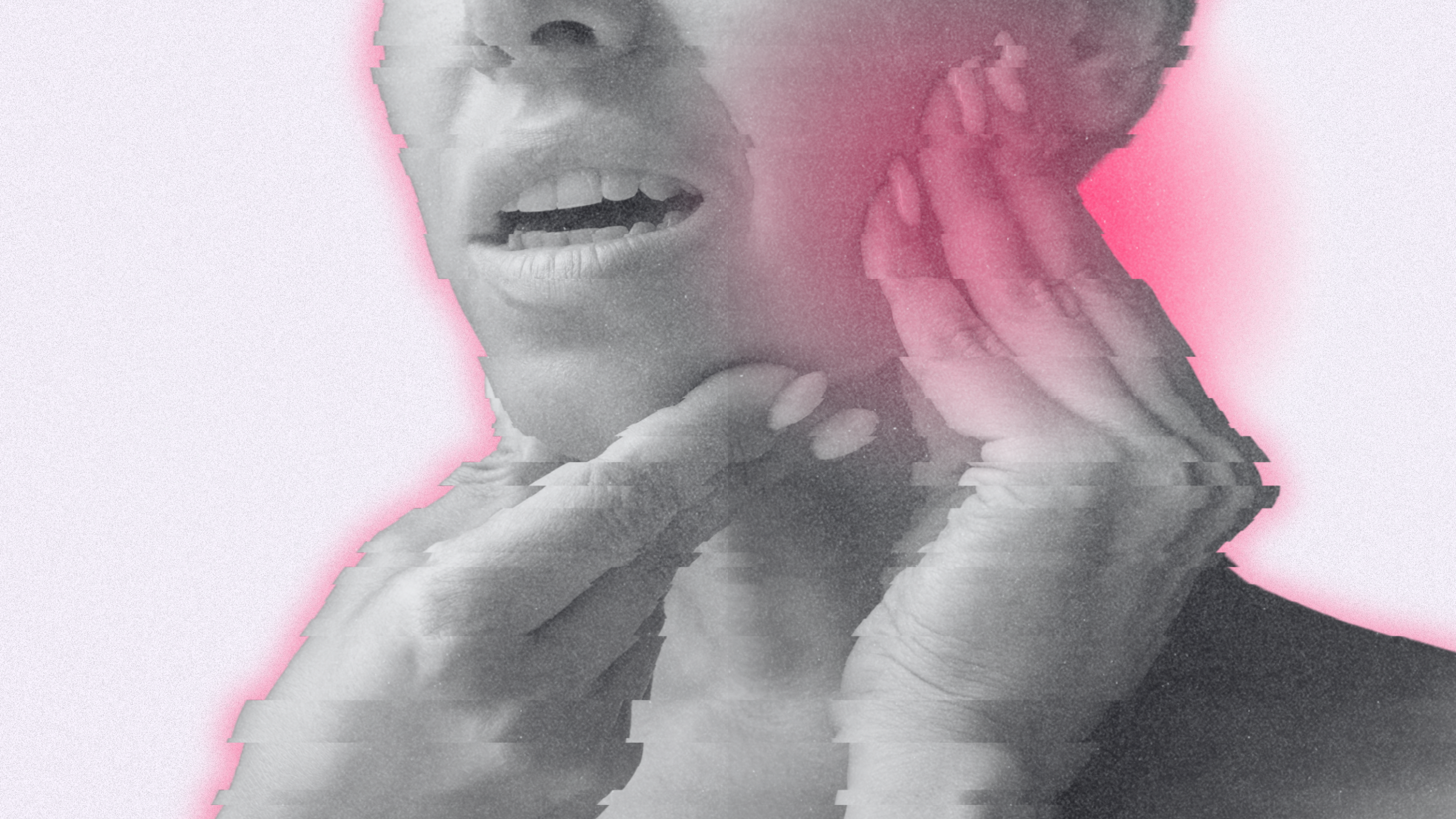If you buy through our links, we may earn an affiliate commission. This supports our mission to get more people active and outside.Learn about Outside Online's affiliate link policy
How to Stop Clenching Your Jaw, According to a Pain Management Expert

(Photo: Ayana Underwood/Canva)
Dealing with any tension in the body is a real pain. But a tight, sore jaw can be mind-numbingly painful at worst and annoying at best. Learning how to relax your jaw can protect you from a host of unnecessary issues.
According to Nojan Bakhtiari, a facial and oral pain specialist, headaches, teeth damage, sleep disruption (and negative repercussions on mental health), and, of course, general pain can all be attributed, at least in part, to a clenched jaw.
What Causes Jaw Tension?
Most jaw tension is created by daily, relatable habits—even would-be relaxing ones, including sleep or yoga. Bakhtiari cites “daytime clenching,” the sort that happens during exercise or stressful work events, and nighttime teeth grinding as predominant culprits.
Other contributing factors? “Excessive caffeine, medications (such as stimulants), and oral habits including nail biting, cheek biting, lip biting, and gum chewing,” he says. This cocktail of conscious and unconscious quirks can create undue pain that can ultimately impact your overall health.
TMJ Disorders
Jaw pain and headaches are often related to TMJ, or the temporomandibular joints, which frame your jaw. You have two of these joints. To find them, place a finger from each hand on the sides of your face just slightly in front of your ears. Open your mouth. You should feel your jaw unlock. Issues with your jaw joints are caused by TMD (temporomandibular disorders). TMD may include disc disorders or even problems with the muscles used for chewing. While the causes of TMJ pain are common, addressing it requires some finesse.
“TMJ exercises need to be tailored to the individual,” says Bakhtiari. “Unfortunately, some classic exercises found online can hurt people who are hypermobile (too flexible).” If you’re interested, Bakhtiari suggests getting evaluated by an orofacial pain specialist first.
5 Ways to Stop Clenching Your Jaw
Fortunately, there is a selection of universal steps you can take to relax your jaw now. According to Bakhtiari, simply noticing the above patterns can help you overcome them.
1. Make Humming Sounds
The sacred mantra of om is more than mentally and spiritually meditative—it can ease physical stress, too. Bakhtiari notes that an om, or any humming sound with an “m,” encourages your jaw to move to a relaxed position.
2. Try to Limit Nail Biting and Gum Chewing
This one is simple. “Break any oral habits such as nail biting and gum chewing,” says Bakhtiari. While these small instances tend to be tied to anxiety, finding other coping mechanisms (think meditation or breathwork) will protect you from greater strife.
3. Cut Down on Caffeine
As noted above, an excess of caffeine and other stimulants can amp you up, causing you to clench your jaw. There’s no need to ditch your coffee and tea entirely—a bit of mindfulness around consumption goes a long way.
4. Develop a Myofascial Release Routine
The myofascial system runs through your entire body, connecting myriad body parts, including your jaw and your hamstrings. Honing a myofascial release routine that addresses your tightest areas may effectively release others; in this case, rolling out your hamstrings may be precisely what you need to help unlock your jaw. You can also purchase myofascial release balls, like these. You can also use a tennis ball.
5. Keep Your Teeth Apart
This simple suggestion can make a big change. According to Bakhtiari, your teeth are never meant to touch—except when you’re eating, of course. Reminding yourself of this fact can instantly alleviate jaw tension.
Want more Outside health stories? Sign up for the Bodywork newsletter.